Are you ready to scale your demand planning?
Every rapidly expanding business out there wants to be in this exact position.
You have massive growth targets. But your demand forecasting is always playing catch up.
The problem is your current technology is out of date. Your on-premise solutions are too inflexible and expensive.
The good news:
Cloud-based demand planning solutions are now available that scale with your business and provide actionable insights.
Here’s the better news…
Table of Contents
ToggleEverything You Need To Know About Cloud-Based Demand Planning Solutions
In this article, you’re going to discover exactly what cloud-based demand planning solutions are, why they’re rapidly taking over, and what to look for when choosing the right one for your company.
The topics covered include:
- How Cloud-Based Demand Planning Solutions Work
- The Hidden Costs of On-Premise Software
- Scalability: How Cloud Platforms Expand with Your Business
- Features to Look for When Choosing the Right Platform
- Making the Switch: What to Expect During Migration

Here’s what you need to know…
How Cloud-Based Demand Planning Solutions Work
Cloud-based demand planning is a game-changer for demand forecasting.
In fact, the cloud-based segment is expected to grow from $2.37 billion in 2024 to a staggering $6.27 billion by 2033, at a CAGR of 10.88%.
The reason is simple. Cloud-based solutions provide access to powerful forecasting tools without requiring significant upfront investments. By leveraging cloud infrastructure, businesses can process data more efficiently and generate accurate forecasts that lead to lower inventory costs and missed sales opportunities.
With increased accuracy with Netstock demand planning software, you’re taking advantage of cloud computing power that crunches the numbers in seconds rather than days, resulting in better forecasting.
But it doesn’t stop there…
Cloud-based solutions capture 62.04% of market share because they allow for real-time visibility into demand patterns and the flexibility to adjust forecasts on the fly.
Imagine having access to demand forecasting that can quickly adapt to market changes with minimal effort from your team.
When your demand planning software is on the cloud, your staff no longer have to go to different places to access the same information.
With everyone using the same set of information (your forecast), collaboration and productivity soar.
For example, your warehouse management team is aware of what’s about to arrive from production. And your production team has a clear picture of your sales targets.
Cloud-based demand planning software makes this a reality for businesses everywhere.
The Hidden Costs of On-Premise Software
If you’re like many businesses still using on-premise demand planning solutions, it’s time to consider making a change. While on-premise software may seem like a more affordable option upfront, in the long run, it costs way more than you realize.
Here are a few hidden expenses that come with on-premise systems that you’re probably already experiencing:
- Ongoing maintenance and hardware upgrades
- Monthly licensing and support fees
- Downtime and slow system performance
- Limited scalability as your business grows
- Deployment and implementation costs
- IT management resources
- Loss of productivity from employees having to work with outdated systems
The cloud-based segment has already captured a 62.04% share in the global demand planning solutions market and will likely continue to grow as more businesses move away from traditional on-premise software to reap the benefits of cloud-based demand planning.
Scalability: How Cloud Platforms Expand With Your Business
Scalability is the standout feature that sets cloud-based demand planning solutions apart.
Small and medium enterprises are set to grow at a CAGR of 15.86% through 2030, all because they finally have access to demand planning tools that can scale with their business.
But how does this work in practice?
Your business needs for demand planning change constantly. Sometimes, you need more processing power, and other times you may require less.
Cloud platforms give you that flexibility without charging for capacity you’re not using.
This means your cloud-based demand planning can automatically scale to meet your fluctuating demand planning needs.
For instance, let’s say your business adds a new product line, and suddenly you need to forecast demand for hundreds of new SKUs instead of a few.
With an on-premise system, this would require new hardware and software licenses, as well as weeks of setup time.
With cloud-based demand planning solutions? You’re up and running in hours.
Cloud platforms automatically allocate the necessary resources, ensuring your forecasts remain accurate even as your product catalog expands.
It’s not just about handling more data, either. Cloud scalability also gives you access to better forecasting methods and tools as they become available. Cloud providers continuously update their platforms with the latest in AI and machine learning technology.
For example, demand sensing is a new forecasting method that research has shown can improve forecast accuracy by 15-40% while decreasing inventory by 10-30%.
Demand sensing relies on advanced algorithms that can only be provided by cloud platforms with the processing power and storage space to back them up.
As these innovations become available, your cloud-based demand planning solution gives you access automatically, no expensive upgrades or long implementation projects.
Features To Look for When Choosing the Right Platform
Ready to switch to cloud-based demand planning solutions? Make sure you evaluate some key features before making the leap.
While most cloud-based demand planning solutions are very similar in their core functions, some may have specific features your business needs.
For example, real-time data synchronization across departments is a must-have for many businesses.
But so is integration with your existing ERP and inventory management software.
Advanced analytics and reporting tools, as well as mobile access for remote workers, are other common requirements.
Choosing the right cloud platform can be as simple as finding the one that comes with all of your desired features built-in.
But remember that migrating your data to a cloud-based system doesn’t have to be a nightmare.
Modern platforms provide tools that automatically import your historical data, validate it during the transfer, and allow your forecasting models to start learning from day one.
Implementation is also quick, with most teams able to see results within weeks.
And don’t worry about staff needing to be trained. Cloud-based demand planning software is designed to be intuitive, with user-friendly dashboards and no technical expertise required.

The future of demand planning is already here. It’s called cloud-based demand planning solutions.
Businesses of all sizes are quickly realizing that cloud platforms offer more flexibility, scalability, and continuous innovation.
Every year you wait to make the switch is a year you’re losing money on expensive on-premise software that isn’t doing your business any favors.
Are you ready to make the switch to cloud-based demand planning solutions? Let Netstock show you the way.

